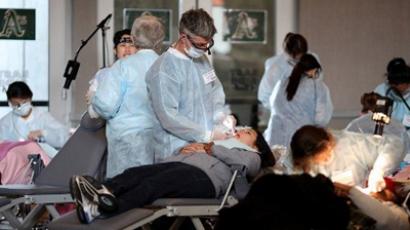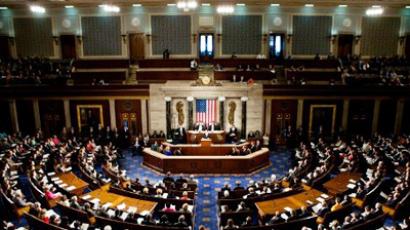Wealth gap widest ever between young and old

If you find yourself turning to mom and dad more often for a handout as of late, there’s a good reason for it.
The gap in wealth between the young and old in the country is the widest it’s ever been, with the average elderly American worth nearly 50 times that of young adults.According to US Census data that has been mulled over by the Pew Research Center, the average American household headed by a man or woman age 65 or older has a net worth 47 times that of a household headed by someone under the age of 35. Analysts believe this marks the widest gap in wealth between the demographics in not just the span that the country has tracked it but in the history of America. Not only does data suggest that the gap between age groups is at its largest ever, but an alarming number of young Americans don’t have any wealth at all. Demographers have determined that 37 percent of the households headed by someone under the age of 35 have a net worth of zero or less, which the Associated Press notes is practically double the statistic from 1984. In comparison, only around 8 percent of the elderly have similar standing.Experts believe that a number of factors play into the gap, but the bursting of the housing boom is one of the most significant contributors to the inequality. Those in the younger group largely purchased real estate during the housing boom, only to find themselves stuck with properties worth much less mere years later. Pew reports that housing wealth for young adults has dropped nearly a third since 1984, yielding not just decreased value of property but greater debt. Older Americans were least likely to purchase property during the housing boom, however, since many of whom were already homeowners. As a result, the report suggest that they a gained of around 57 percent in housing wealth even after the bubble burst.Additionally, the snowballing sum of outstanding student debt across young America has also contributed to widening the gap between the age groups. USA Today reported last month that unpaid loans taken out by American college students will exceed $1 trillion for the first time some point before 2011 comes to a close, at which point student loan debt will exceed the debt of credit cards. The College Board reports that the average full-time undergrad student in America borrowed 63 percent more annually to pay for their education in 2010 than they did a decade earlier. A petition launched by MoveOn.org to eliminate student debt has garnered nearly hundreds of thousands of signatures as of late, and the organization believes that bailing out the broke students would be much wiser than doing so to the banks.“If you put more money into the hands of people, they're going to spend it. And that will create demand, it will create economic growth and it will create jobs,” Moveon.org’s Robert Applebaum told RT recently.“They're not starting businesses, they're not buying cars, they're not buying houses, they're not starting families, they're not having children,” said Applebuam.The ongoing unemployment epidemic plaguing America is also to blame in part for the difference between the two age groups. Older Americans are staying at their jobs longer, while students fresh out of college have been unable to find employment as the jobless figures continue to be grim. "The elderly have a comprehensive safety net that most adults, especially young adults, lack," University of Michigan public policy professor Sheldon Danziger adds to the AP. The latest statistics released from Pew show that the gap between age groups has widened to double what it was only a few years ago in 2005.














